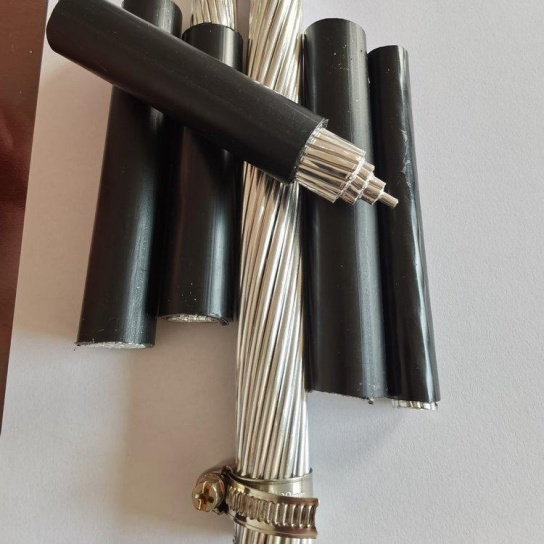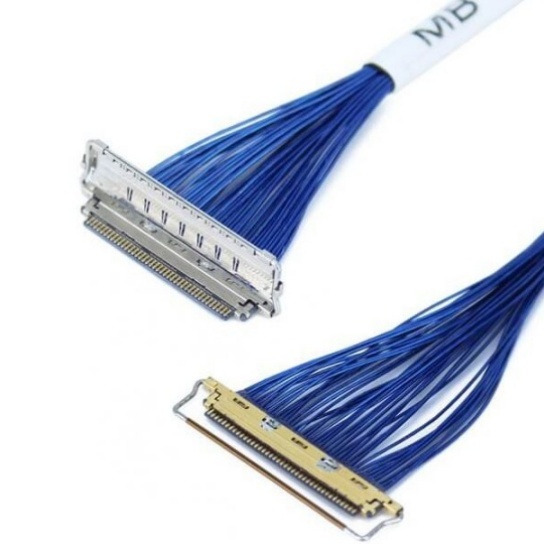Applications of Ultra-Low Loss Aviation Cables in Aircraft Electrical Systems for Power and Signal Transmiss...
- Power Transmission: Maximizing Efficiency
Ultra-low loss cables minimize energy dissipation in aircraft power distribution networks, which is vital for fuel efficiency and operational reliability.
Key Applications:
Electric Propulsion Systems:
Support hybrid-electric and all-electric aircraft (e.g., NASA’s X-57 Maxwell) by reducing resistive losses in high-voltage DC networks (up to 1,500V).
Enable efficient power transfer from batteries to electric motors, improving range by 10–20%.
Auxiliary Power Units (APUs):
Deliver stable power to onboard systems (e.g., air conditioning, hydraulic pumps) with <1% energy loss, even under peak loads.
Cabin and Galley Power:
Sustain high-demand services like in-flight entertainment and Wi-Fi without voltage drops or overheating.
Technical Innovations:
High-Purity Conductors: Silver-plated copper or aluminum-lithium alloys reduce resistance by 50% compared to standard copper.
Advanced Insulation: Nitrogen-injected foamed PTFE or ceramic-polymer composites minimize dielectric losses at high frequencies.
2. Signal Transmission: Ensuring Precision and Reliability
Aircraft avionics, navigation, and communication systems demand flawless signal integrity. Ultra-low loss cables excel in high-frequency and high-speed data environments.
Critical Roles:
Avionics Networks:
Transmit data between flight control computers, autopilot systems, and sensors with near-zero attenuation.
Example: Fly-by-wire systems in the Boeing 787 use ultra-low loss cables to relay actuator commands with <0.05 dB/m loss.
Radar and Navigation:
Maintain signal clarity in X-band (8–12 GHz) and Ku-band (12–18 GHz) radar systems for weather detection and terrain mapping.
In-Flight Connectivity:
Support 5G and satellite communication (Ka-band) for real-time passenger Wi-Fi and cockpit data links.
Performance Enhancements:
EMI/RFI Shielding: Multi-layer shielding (e.g., aluminum foil + braided copper + conductive polymer) blocks interference from engines and onboard electronics.
Low Skew Design: Matched impedance and twisted-pair configurations ensure synchronized signal timing in high-speed Ethernet (ARINC 664) networks.
3. Weight and Space Optimization
Aircraft design prioritizes lightweight solutions to reduce fuel consumption and emissions. Ultra-low loss cables contribute significantly to this goal.
Advantages:
Thinner Conductors: High conductivity materials allow smaller cross-sections without compromising current capacity.
Redundant Cooling Systems: Lower heat generation eliminates the need for heavy heat sinks or active cooling in cable trays.
Harness Simplification: Consolidate multiple signal and power lines into single, multi-functional cables.
Case Study: Airbus A350’s electrical system reduced wiring weight by 30% using ultra-low loss cables, saving ~500 kg per aircraft.
4. Durability in Extreme Environments
Aircraft cables must withstand temperature fluctuations, vibrations, and chemical exposure. Ultra-low loss designs excel in harsh conditions.
Robust Features:
Temperature Resilience: Operate reliably from -65°C to 260°C (-85°F to 500°F) using polyimide insulation or silicone-jacketed cables.
Vibration Resistance: Helically wound shields and flexible ETFE jackets prevent wear in engine bays and landing gear systems.
Corrosion Protection: Gold-plated connectors and nanocoatings resist oxidation in humid or salt-laden environments.
Certification: Compliant with MIL-DTL-27500 (military) and AS50881 (commercial) standards for aerospace durability.
5. Supporting Next-Generation Technologies
Ultra-low loss cables are foundational to emerging aviation innovations:
More Electric Aircraft (MEA): Power electric taxiing systems, landing gear, and flight surface actuators with minimal energy waste.
Fly-by-Light Systems: Fiber-optic variants enable EMI-immune data transmission for autonomous flight controls.
Urban Air Mobility (UAM): Enable lightweight, high-efficiency power networks in eVTOLs like Joby Aviation’s air taxis.
6. Sustainability and Regulatory Compliance
Ultra-low loss cables align with aviation’s green transition:
Energy Savings: Reduce CO2 emissions by 2–3% per aircraft through optimized power transmission.
Recyclable Materials: Halogen-free, RoHS-compliant designs simplify end-of-life recycling.
Regulatory Alignment: Meet FAA Part 25 and EASA CS-25 fire safety standards for low-smoke, flame-retardant materials.
Case Study: Ultra-Low Loss Cables in the Lockheed Martin F-35
The F-35 Lightning II leverages ultra-low loss cables to:
Transmit targeting and sensor data at 40 Gbps with <0.1 dB signal loss.
Withstand supersonic speeds and extreme g-forces.
Reduce electrical system weight by 20%, enhancing agility and fuel efficiency.






